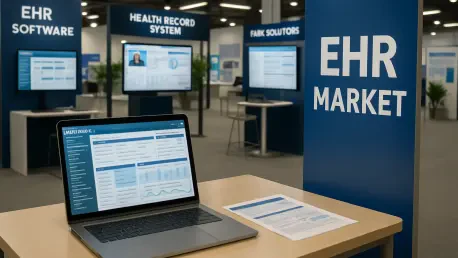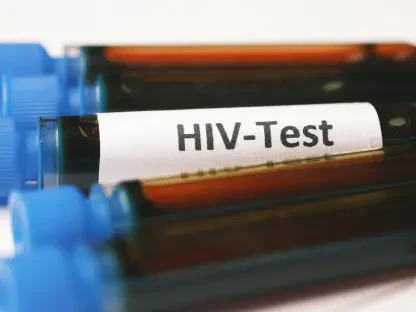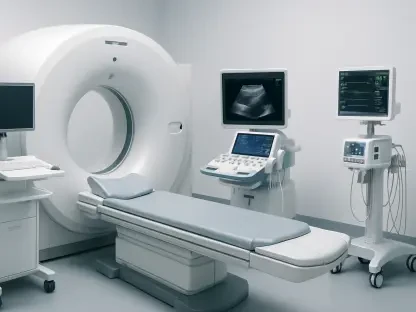The healthcare industry stands at a transformative crossroads, propelled by the rapid evolution of Electronic Health Records (EHRs), which are fundamentally changing how patient data is managed and utilized across the globe. These digital systems, replacing outdated paper-based records, offer real-time, secure access to comprehensive medical histories, diagnoses, treatment plans, and more. As a vital component of modern healthcare, EHRs are not merely tools for record-keeping but catalysts for improved efficiency, reduced medical errors, and enhanced patient outcomes. With the global EHR market valued at US$ 40.55 billion in 2024 and projected to reach US$ 79.43 billion by 2031, the scale of this technological shift is staggering. This growth, driven by a compound annual growth rate (CAGR) of 10.3% from 2025 to 2031, underscores the profound impact EHRs will have on healthcare delivery. This article delves into the key trends fueling this expansion, regional disparities in adoption, and the technological innovations poised to redefine medical care over the coming years.
Accelerating Growth in the EHR Landscape
The surge in EHR adoption is driven by an urgent need for streamlined data management in an increasingly complex healthcare environment. As patient volumes grow and medical information multiplies, the ability to organize and access data efficiently has become paramount. EHRs address this by digitizing records, enabling instant retrieval of critical information that can save lives in emergencies. The market’s projected growth at a CAGR of 10.3% from 2025 to 2031 highlights a global recognition of these benefits. Beyond operational efficiency, EHRs foster better clinical decisions by providing a holistic view of patient health, reducing the likelihood of redundant tests or conflicting treatments. Government policies, especially in developed nations, further accelerate this trend through incentives and mandates that encourage healthcare providers to transition to digital systems, ensuring that the momentum behind EHR adoption remains strong.
Another pivotal factor propelling the EHR market forward is the integration of advanced technologies that enhance system capabilities. Regulatory support worldwide plays a crucial role, with initiatives designed to promote digital health infrastructure. In regions where healthcare spending is high, such as North America, these policies have led to near-universal adoption among large providers. However, the benefits extend beyond compliance; EHRs are becoming indispensable for managing population health data, tracking disease outbreaks, and supporting public health initiatives. The financial backing from governments, coupled with private sector investments, ensures that resources are available to overcome initial implementation costs. This synergy between policy and technology not only drives market expansion but also positions EHRs as a cornerstone of future-focused healthcare systems, capable of addressing both individual and systemic needs with unprecedented precision.
Regional Variations and Emerging Opportunities
Geographical differences in EHR adoption reveal a landscape of both progress and potential. North America stands as the leader, bolstered by robust IT infrastructure and supportive legislation like the HITECH Act, which has incentivized widespread implementation across hospitals and clinics in the United States. Europe follows closely, with nations such as Germany and the UK prioritizing digitalization to curb costs while improving patient care quality. These regions benefit from established healthcare systems and significant funding, allowing for rapid deployment of EHR solutions. Their success serves as a blueprint for others, demonstrating how strategic investments and regulatory frameworks can transform healthcare delivery through technology, ensuring that providers are equipped to meet modern demands with efficiency and accuracy.
In contrast, the Asia Pacific region emerges as a hotspot for future growth, driven by expanding healthcare networks and increasing IT investments in countries like China and India. While adoption rates here lag behind North America and Europe, the pace of change is remarkable, fueled by government initiatives aimed at modernizing medical facilities. Challenges persist in less developed areas, including the Middle East, Africa, and Latin America, where limited infrastructure and funding hinder progress. Yet, the growing interest in EHRs in these regions signals vast untapped potential. As global health priorities shift toward universal access and equity, these emerging markets could become critical battlegrounds for EHR vendors, offering opportunities to tailor solutions to unique local needs and build resilient healthcare systems from the ground up.
Technological Innovations Redefining EHR Capabilities
Technology lies at the core of EHR evolution, with innovations like artificial intelligence (AI) and machine learning reshaping how these systems support clinical practice. AI-driven tools embedded in EHR platforms can analyze vast datasets to predict patient outcomes, identify health risks, and assist in diagnostic processes, thereby enhancing decision-making for providers. Meanwhile, cloud-based EHR solutions are revolutionizing accessibility by allowing secure data storage and retrieval from any location, a feature proving invaluable for telehealth services. This technological leap not only reduces administrative burdens but also empowers smaller practices with tools once reserved for large institutions, democratizing access to cutting-edge healthcare resources and paving the way for more personalized, responsive medical care.
Despite these advancements, significant hurdles remain, particularly around interoperability and data security. The inability of different EHR systems to communicate seamlessly often disrupts coordinated care, as patients move between providers using incompatible platforms. Industry efforts to standardize data exchange protocols are intensifying, supported by government policies aimed at breaking down these silos. Equally critical is the protection of sensitive patient information, with regulations like HIPAA in the U.S. and GDPR in Europe setting stringent standards to combat cyber threats. Addressing these challenges is essential for maintaining trust in digital health systems. As technology continues to advance, the focus on creating secure, interoperable EHRs will be a defining factor in their ability to transform healthcare delivery on a global scale by 2031.
Future Pathways for EHR Integration
Reflecting on the trajectory of EHRs, it’s evident that their adoption has already begun reshaping healthcare by providing a foundation for data-driven decision-making and improved patient safety in recent years. The market’s expansion, which saw a valuation of US$ 40.55 billion in 2024, is a testament to the growing reliance on digital tools to address inefficiencies in medical record-keeping. Technological strides, particularly in AI and cloud computing, have started to alleviate clinician workloads while enhancing care quality through predictive insights and remote access. Regional leaders like North America and Europe have set benchmarks for implementation, while emerging markets show promising early steps toward digital health integration, despite facing systemic challenges.
Looking ahead, the path forward involves tackling persistent issues like interoperability to ensure seamless data sharing across healthcare ecosystems. Stakeholders must prioritize investments in standardized systems that bridge gaps between platforms, alongside robust cybersecurity measures to protect patient privacy. Collaboration between governments, technology providers, and healthcare organizations will be crucial to sustain the projected growth to US$ 79.43 billion by 2031. By focusing on scalable, secure solutions tailored to diverse regional needs, the industry can unlock the full potential of EHRs, ultimately creating a more connected, efficient, and patient-centered healthcare future.









